Natural beauty of Norway
Norway is our favorite country!
If you love nature, this country is the place to visit. Mountains, fjords, numerous waterfalls. People are friendly and ready to help. Everyone speaks English. The mountains offer miles and miles of hiking trails with breathtaking views.
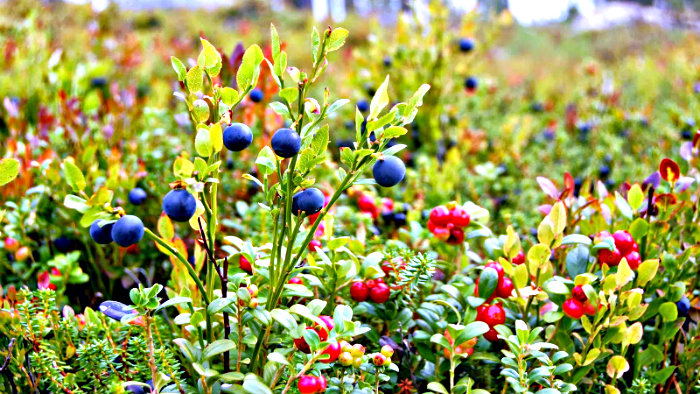
While hiking, you can pick wild berries and mushrooms. In the woods, we found raspberries, blueberries, strawberries, cranberries, cloudberries. You can pick mushrooms too but only if you know which ones are safe to eat, and if you have access to the kitchen so that you could cook your fungi treasures.
Norwegian waterfalls
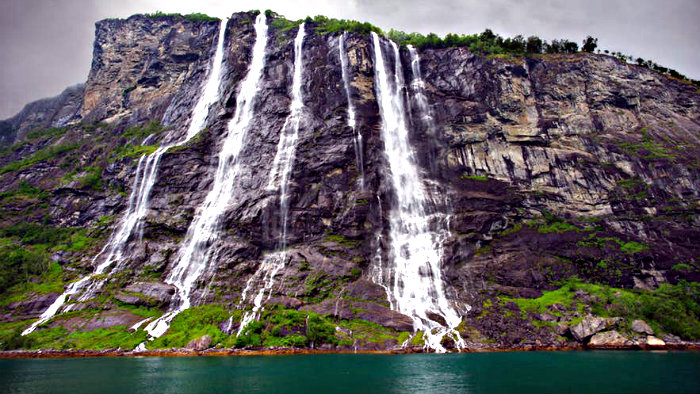
During our two weeks traveling through Norway, we saw more waterfalls than in all our previous lives. At least it seemed like that. Before visiting Norway, we saw Niagara Falls (twice), Iguazu Falls (also twice), waterfalls in Japan, New Zealand, and other countries, including the United States.
However, we don’t remember seeing so many of them in just one country. Did you know that Norway has 10 highest waterfalls in Europe?
Flam – one of the most popular destinations

Flam is a village near Sognefjord. Probably, it is one of the most popular destinations in Norway. We loved Flam so much that we want to revisit this place. We will make sure to spend several days in that area.
We took a boat ride through the fjord. It was long and quite narrow. The boat passed numerous waterfalls. Sometimes it felt like we could touch them.
After the boat ride, we hopped on a train going up the mountain. As the train was slowly chugging higher and higher, we could not decide where to look: up, down, right, left? But it really did not matter. In either direction, the beauty of the scenery was astonishing.
Huldra

The train stopped next to a huge waterfall. Everyone got off. While we were looking at the waterfall, the recorded voice started telling us the old Norwegian tale about Huldra, a forest creature in Scandinavian folklore.
Suddenly we saw a girl dressed in red. Standing on the ledge, next to the falling water, she was dancing and singing an old Norwegian song. We assumed that she was playing the part of Huldra. Roaring waterfall, the girl in the long red dress on the high mountain ledge, beautiful song – the whole scene was magical!
The girl finished the song and disappeared. We were instructed to board the train to continue our journey up the mountain.
We took the same train back. I wish we knew that there was a trail going down. We were very envious of people walking on this trail: they could spend as much time as they wanted to breathe the fresh mountain air and look at the incredible views of the valley and the fjord in front of them.
Camping in Norway

Planning to do some camping in Norway, we packed a small tent. To our pleasant surprise, we did not need it. Many campgrounds offered a cabin stay in addition to campsites. The cabins were comfortable, spotless, and very cheap – about $20 per night.
They had two bunk beds, a fridge, coffee maker, plates, pans, flatware. We had to have our own towels and linens, which we wisely brought from home. The notices on the door asked campers to wash the dishes and sweep the floor before leaving.
The public showers had a squeegee for cleaning the shower walls. It looked like all campers were cleaning freaks – everything was spotless. We followed that example religiously at all camps where we stayed.
At one of the campgrounds, our cabin had a million-dollar view. From our porch, we could see the lake on the left and a waterfall at a distance on the right. We could even hear the muffled roar of the falling water.
Oslo, capital of Norway
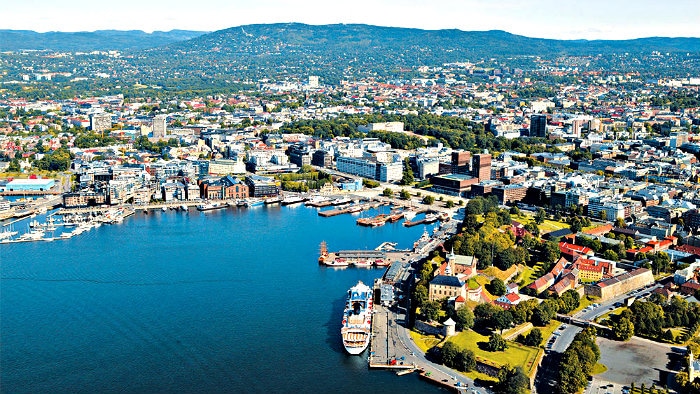
Oslo has beautiful water views – this city is located at the end of the fjord. If you like to walk, this town is for you!
We decided not to use our rental car in Oslo. Instead, we bought the Oslo Pass, which included unlimited public transportation and entrance to museums. We stayed at a reasonably priced hotel a few bus stops from the city center.
The hotel served a typical Norwegian buffet breakfast: muesli, lox, a large variety of cheeses and healthy bread, pickled herring, just to name a few.
We took a ferry to visit three famous museums on the other side of Oslofjord: Norwegian Museum of Cultural History, Kon-Tiki Museum, and Viking Ship Museum.
We also advise you to visit the Akker Brygge, a neighborhood in central Oslo. It is a popular area for shopping, dining, and entertainment. The waterfront promenade assembles crowds of people looking at the sculptures sticking out of the water. In the park adjoining the Akker Brygge, we attended a music festival.
On our last evening in Oslo, we noticed crowds of people waiting in line to board the ferries. People were getting ready to go to an island where they would spend a whole night eating, drinking, and dancing around the bonfires.
We were told that it is the traditional Norwegian way to celebrate the summer solstice. Unfortunately, we couldn’t join them – we had to leave Oslo early the next morning.
Vigeland Sculpture Park

One of the most captivating parks in Oslo is the Vigeland Sculpture Park. You can spend several hours studying and enjoying the creations of the famous sculptor Vigeland.
Bergen, Edvard Grieg’s home

Bergen is the second largest city after Oslo. Bergen is nestled between the sea and the mountains. The great Norwegian composer Edvard Grieg lived in this city as a child, and later he returned to live there with his wife.
Edvard Grieg (1843-1907)
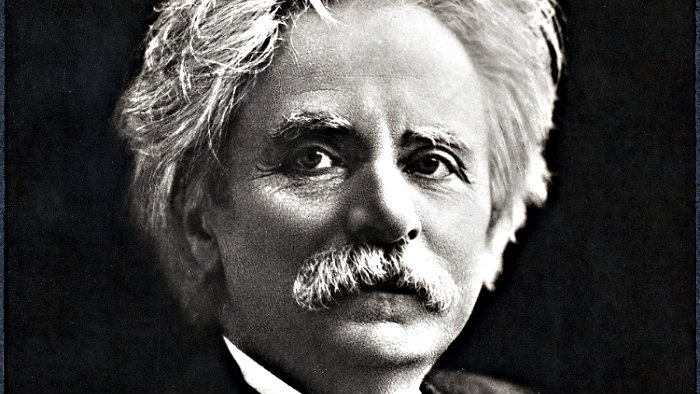
We went to Trolldhaugen, the home of Edvard Grieg. He was my favorite composer when I was studying piano in music school in Moscow. We walked around the whole estate, enjoying the landscape and the water views. Now it is a museum with a visitor center and a concert hall.
Edvard Grieg’s house
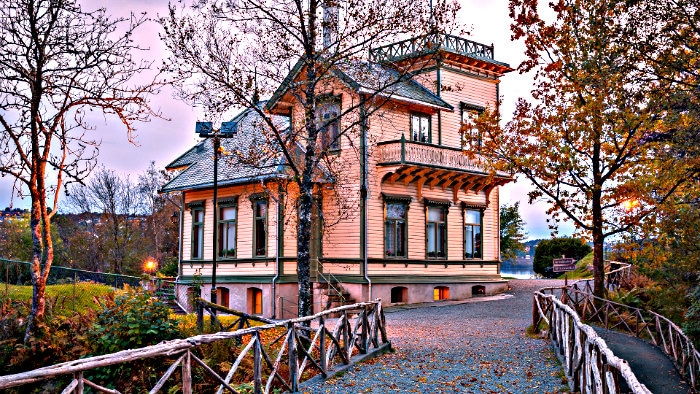
We went to Trolldhaugen, the home of Edvard Grieg. He was my favorite composer when I was studying piano in music school in Moscow. We walked around the whole estate, enjoying the landscape and the water views. Now it is a museum with a visitor center and a concert hall.
Grieg’s large house was converted to the museum in 1928. He lived there for the last twenty-two summers of his life. In this house, Grieg entertained his guests playing on Steinway grand piano.
I played on Grieg’s piano
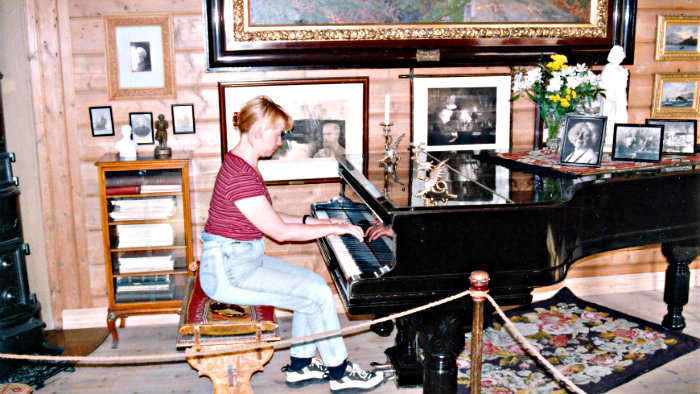
Grieg’s large house was converted to the museum in 1928. He lived there for the last twenty-two summers of his life. In this house, Grieg entertained his guests playing on Steinway grand piano.
When we visited the museum, it was empty, with no visitors. Alexander told the guide that his wife is a pianist from Russia. Luckily the friendly guide let me play on Grieg’s personal piano. What a treat!
Grieg’s cabin
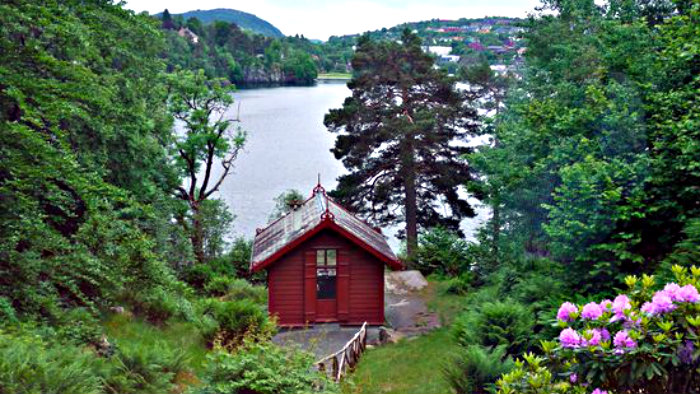
Grieg built a tiny cabin next to the water edge. He used this place for creating his world famous music. We picked through the window of the cabin and saw a piano and a desk.
In the evening we attended a piano recital in the concert hall. The turf roof of the building was covered with green grass. Through the floor-to-ceiling windows, we could see the lake behind the stage.
Before leaving Bergen, we took a ferry to a nearby small island. The whole island belonged to Ole Bull, the famous Norwegian virtuoso violinist. He died on the island in 1880. He was a close friend of Edvard Grieg’s parents.
When Ole Bull listened to 15-year-old Edvard playing piano, he announced that this child had a great future in music. He advised parents to send young Edvard to study at the Leipzig Conservatory.
Food in Norway
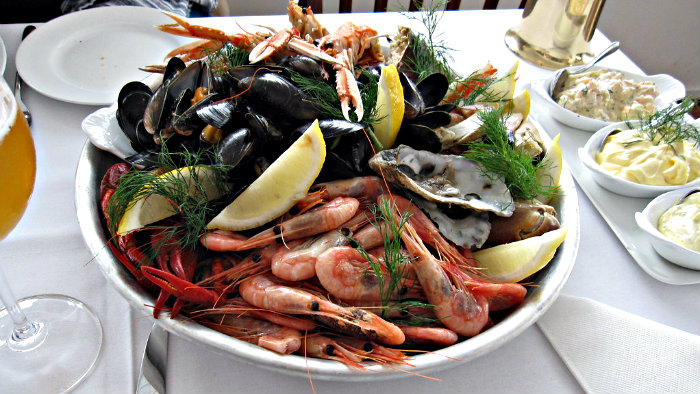
The restaurant food is costly in Norway. In the evenings, the restaurants look full, but you notice that the majority of people just drink beer.
We found out that after socializing with family and friends at the restaurant, on the way home, the locals buy the “real” food from the street vendors. We followed their example and had cheap and delicious fast food each evening – hot dogs, hamburgers, falafel, gyro.
In the tour book, we found the best place for a seafood buffet in Bergen, and we splurged only at that restaurant. Sitting in the dining room on the second floor, and looking at the bay, we were eating the best-tasting seafood we ever had: shrimp, salmon, mussels, clams. The meal was worth every krone we paid!
In the small cafeteria high in the Norwegian mountains (we could see the snow in July) we tried their traditional porridge “rommegrot” which looks like cream of wheat. It tasted heavenly, but probably had about 2,000 calories per tablespoon.
In Bergen, we snacked at the fishermen’s market. The vendors offered to try different kinds of smoked fish and even smoked whale meat.
We saved a lot of money by not eating in the restaurants regularly. We purchased food at the large supermarkets which were running sales on cheeses, vegetables, yogurt, bread, fruits.
A cheap Styrofoam cooler kept our perishables cold. Sometimes it was difficult to choose the most picturesque place for our picnics – everywhere we had great views next to the lakes, rivers, fjords, waterfalls.
The beer, wine, and liquor are expensive in Norway. We saved money by buying beer at the supermarkets.
Challenging driving in Norway

To reach all the destinations on our itinerary, we had to take many small roads. Each turn offered another incredible view. But it was mostly a slow going. The roads were narrow (just one lane each way) and windy. Some small bridges were wide enough only for one car, which made driving even more hazardous.
We saw many vehicles standing on the shoulder – the people were taking pictures of the mountains, waterfalls, lakes. These parked cars slowed down traffic, but we never complained. More often than not, we stopped ourselves and took pictures like other tourists.
Trollstigen Mountain Road is spectacular. It attracts many tourists. This stomach-churning road has hairpin turns because the builders constructed it on the side of a very steep mountain.
On some parts of Trollstigen road, we had to slow down to a crawl. The observation platform on the top rewarded us with a view of the Stigfossen waterfall. We were relieved to get out of the car and enjoy the view without butterflies in the stomach.
The longest in the world tunnel
could kill us
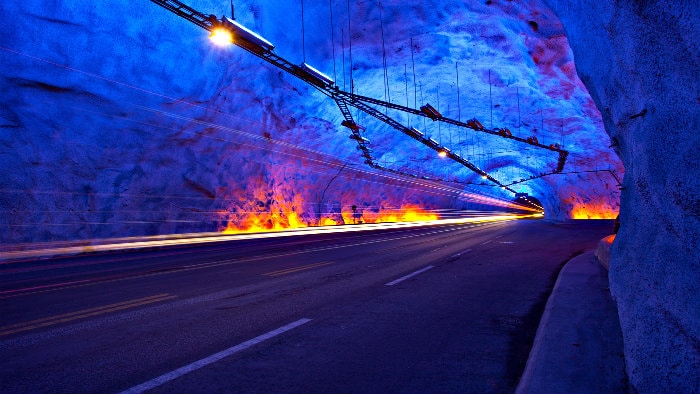
Norway is a mountainous country. Only 10% of its area is suitable for growing crops. That’s why the Norwegians built over one thousand road tunnels.
Driving from Bergen north-east, we had to go through the Lærdal Tunnel, which is 24.51 kilometers (15.23 miles) long. As in any tunnel, all cars had their lights on. Vehicles were traveling in both directions at approximately 50 mph. It was exciting to drive through the longest tunnel in the world until the excitement turned into a quick shot of fear.
Suddenly, we could not see anything in front of us. Alexander, who was driving, thought for a second that he had a stroke and became completely blind. “What’s happening?” he yelled.
This terrible situation lasted, probably for about ten seconds. We were horrified that at any moment we could have a head-on collision or hit the wall of the tunnel. In desperation, I reached for the handle operating the windshield wipers, and both of us could see the road again.
Only later, we understood what happened. The tunnel had many large fans to keep the air moving. From time to time we could see a rivulets of water running down the tunnel walls. For some reason, in one place the fans did not work, and our car windshield got covered by the fog.
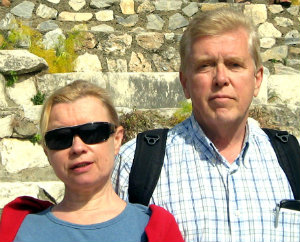
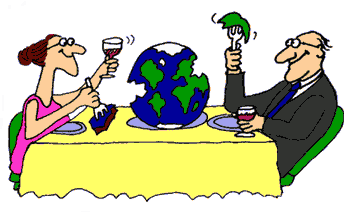
Recent comments